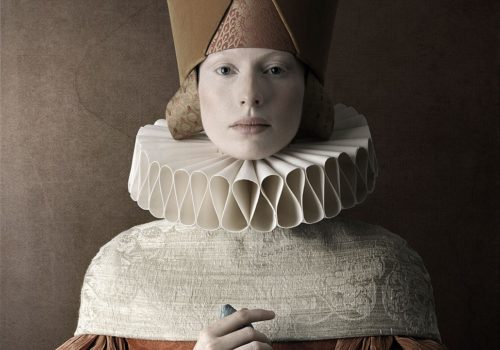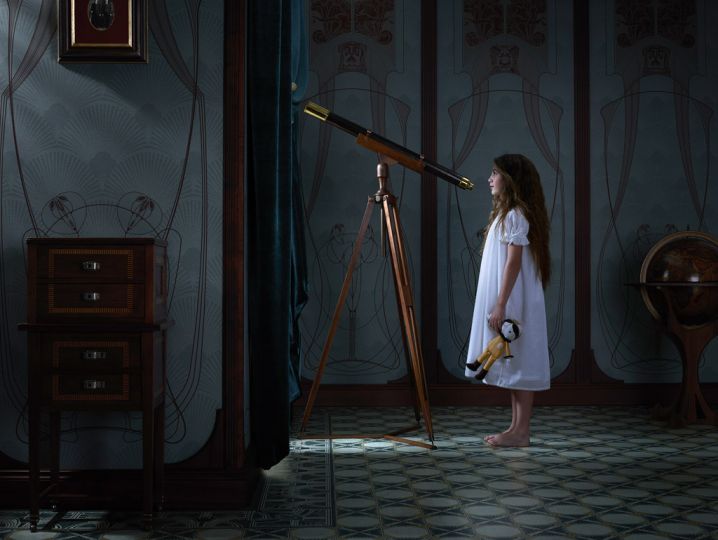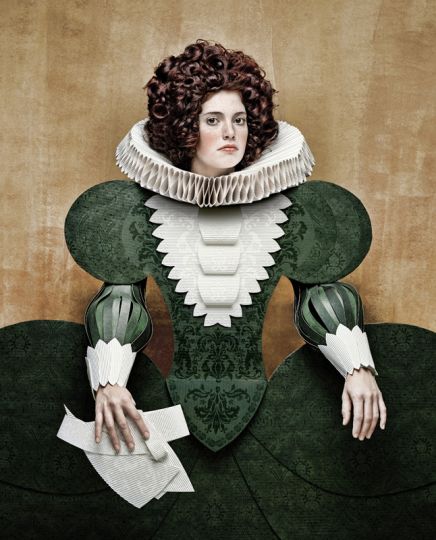Christian Tagliavini’s work is the fruit of patient labor of repeated approaches and revisions. The labor of an eye, his work is also obsessional and constantly transforming. Yet it aims to identify constants and leave legible traces. The body opens and closes again. Even with the eyes shut, the face opens up. A second set of eyelids opens up in memory, where the body appears as an enigma, shows itself, hides, thinks. Thinks itself. A heavy, dull pulsation of the deep is gnawed by shadows that dissipate far from words, for the heart and the emotion.
The series 1503 is Christian Tagliavini’s take on Renaissance portraits by the painter Bronzino. The photographs both transpose and transmogrify the sixteenth-century iconography, but the pictorial is modeled more frontally and more abruptly. The “flat” horizon of each photograph plumbs the depths of time and unfolds an uncanny vision of the sayable.
The Italian-Swiss artist tracks down the missing element in the image and in the portrait, namely the (impossible?) absent image. He compresses its existence without trying to “intellectualize” it—and this is the essential point. For the photographer knows that everything is yet to be shown, discovered. In his shots and revised compositions, men and women burst forth more impertinently than they do in the original works. The complexion (that is, what is often most profound about a person) becomes more meaningful and perfection more perfect. Not without some aloofness, Christian Tagliavini captures in his work what swells the emotion. This is the source of the élan of these photographs: the (fine) pretext of reprisal is a cover for an attempt to give style and time an eternal form.
From one image to the next, Christian Tagliavini’s reprisals of Bronzino’s paintings find new presence and personality in something that nevertheless remains faithful to the original. Photography overturns painting, even while preserving its constancy, its mythologies, and its enigmas. The change of the medium produces a hybrid; it endows the image with a new power. The artist traverses different chapters in the history of art, all the way to the waiting room of good doctor Freud and to a “vintage” form of science fiction.
His Jules Verne-inspired journeys are informed by the insatiable desire for origins and for an optical vertigo. Through light, the body emerges anew from darkness. Hence the glacial eroticism of these images which sear the beating heart in a face-to-face encounter, each time renewed. With great technical skill, Tagliavini develops the method of seeking the mute, deaf image that neither adds anything nor takes anything away.
A kind of vacuum is shattered when, of its own accord, something remains that is absent from the quest for an unnamable aspect of beauty. These portraits are more than just revised: they are intentionally “scrambled”—in a most orderly way, however, which sheds new light on them. They speak of silence and give an image to desire in one perfect gesture: the gesture of posing, of taking the shot, as well as the deliberate gesture of incompleteness meant to leave something for the viewer to chew on. Tagliavini’s portraiture is a calculating and humorous pastiche of the work of nineteenth-century pioneering photographers and realist painters. However, his journey takes him less into the past than it projects him into the future.
EXHIBITION
Voyages Extraordinaires
Photographies de Christian Tagliavini
From December 12, 2015 to February 27, 2016
Camera Work
Kantstrasse 149
D-10623 Berlin
Germany
Tel +49 30 31 00 77-3
http://www.camerawork.de


















